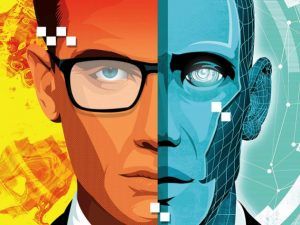Jonathan Shaw in Harvard Magazine:
 IN MARCH 18, 2018, at around 10 P.M., Elaine Herzberg was wheeling her bicycle across a street in Tempe, Arizona, when she was struck and killed by a self-driving car. Although there was a human operator behind the wheel, an autonomous system—artificial intelligence—was in full control. This incident, like others involving interactions between people and AI technologies, raises a host of ethical and proto-legal questions. What moral obligations did the system’s programmers have to prevent their creation from taking a human life? And who was responsible for Herzberg’s death? The person in the driver’s seat? The company testing the car’s capabilities? The designers of the AI system, or even the manufacturers of its onboard sensory equipment?
IN MARCH 18, 2018, at around 10 P.M., Elaine Herzberg was wheeling her bicycle across a street in Tempe, Arizona, when she was struck and killed by a self-driving car. Although there was a human operator behind the wheel, an autonomous system—artificial intelligence—was in full control. This incident, like others involving interactions between people and AI technologies, raises a host of ethical and proto-legal questions. What moral obligations did the system’s programmers have to prevent their creation from taking a human life? And who was responsible for Herzberg’s death? The person in the driver’s seat? The company testing the car’s capabilities? The designers of the AI system, or even the manufacturers of its onboard sensory equipment?
“Artificial intelligence” refers to systems that can be designed to take cues from their environment and, based on those inputs, proceed to solve problems, assess risks, make predictions, and take actions. In the era predating powerful computers and big data, such systems were programmed by humans and followed rules of human invention, but advances in technology have led to the development of new approaches. One of these is machine learning, now the most active area of AI, in which statistical methods allow a system to “learn” from data, and make decisions, without being explicitly programmed. Such systems pair an algorithm, or series of steps for solving a problem, with a knowledge base or stream—the information that the algorithm uses to construct a model of the world.
Ethical concerns about these advances focus at one extreme on the use of AI in deadly military drones, or on the risk that AI could take down global financial systems. Closer to home, AI has spurred anxiety about unemployment, as autonomous systems threaten to replace millions of truck drivers, and make Lyft and Uber obsolete. And beyond these larger social and economic considerations, data scientists have real concerns about bias, about ethical implementations of the technology, and about the nature of interactions between AI systems and humans if these systems are to be deployed properly and fairly in even the most mundane applications.
More here.
